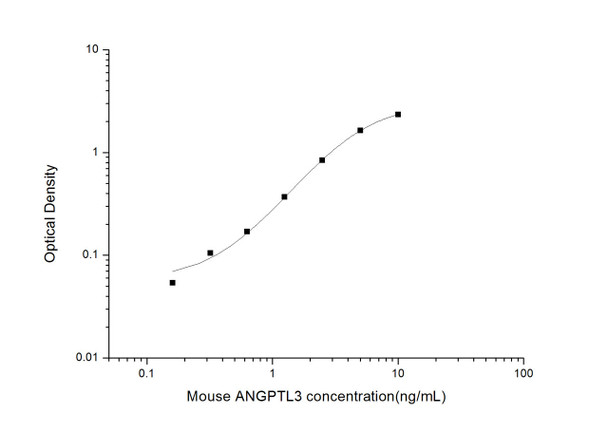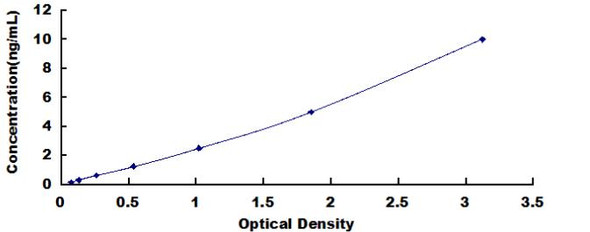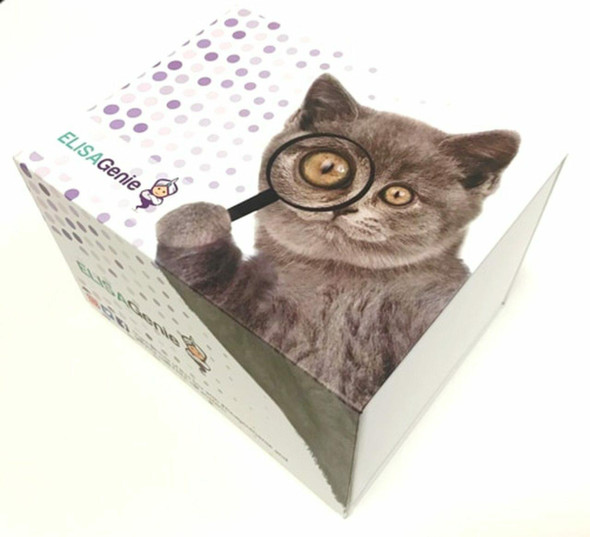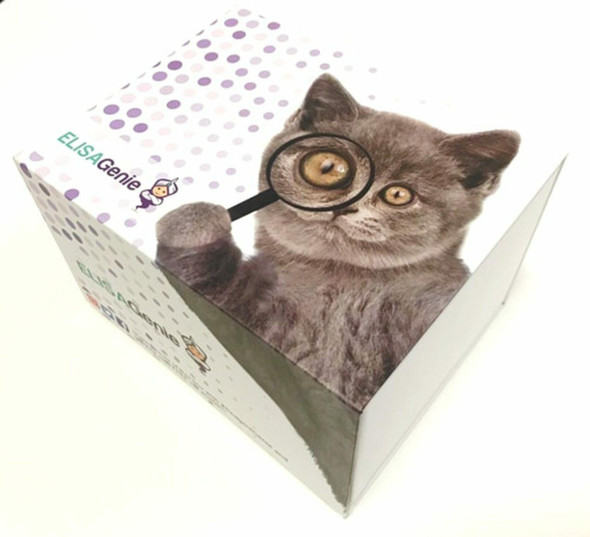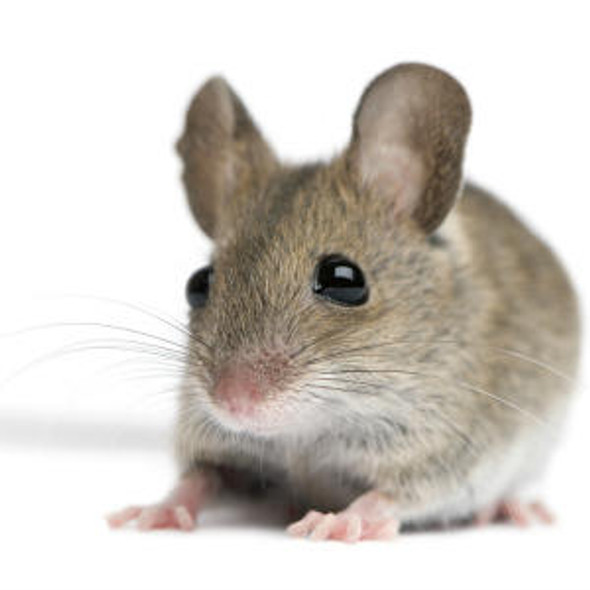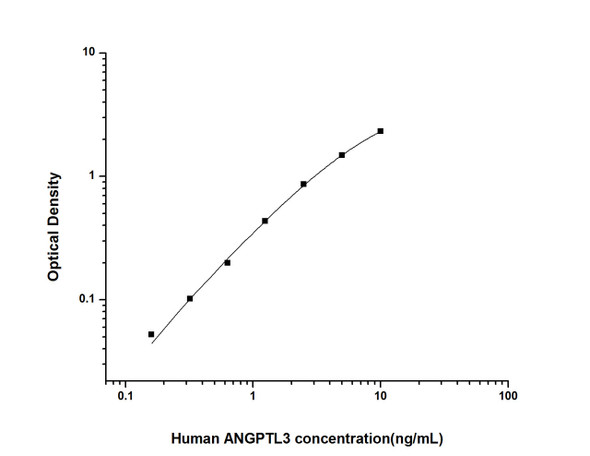Mouse Cardiovascular ELISA Kits
Mouse ANGPTL3 (Angiopoietin Like Protein 3) ELISA Kit (MOES01736)
- SKU:
- MOES01736
- Product Type:
- ELISA Kit
- Size:
- 96 Assays
- Uniprot:
- Q9R182
- Sensitivity:
- 0.09ng/mL
- Range:
- 0.16-10ng/mL
- ELISA Type:
- Sandwich
- Synonyms:
- ANG-5, ANGPT5, ANL
- Reactivity:
- Mouse
- Sample Type:
- Serum, plasma and other biological fluids
- Research Area:
- Cardiovascular
Description
| Assay type: | Sandwich |
| Format: | 96T |
| Assay time: | 4.5h |
| Reactivity: | Mouse |
| Detection Method: | Colormetric |
| Detection Range: | 0.16-10 ng/mL |
| Sensitivity: | 0.10 ng/mL |
| Sample Volume Required Per Well: | 100µL |
| Sample Type: | Serum, plasma and other biological fluids |
| Specificity: | This kit recognizes Mouse ANGPTL3 in samples. No significant cross-reactivity or interference between Mouse ANGPTL3 and analogues was observed. |
This ELISA kit uses Sandwich-ELISA as the method. The micro ELISA plate provided in this kit has been pre-coated with an antibody specific to Mouse ANGPTL3. Standards or samples are added to the appropriate micro ELISA plate wells and combined with the specific antibody. Then a biotinylated detection antibody specific for Mouse ANGPTL3 and Avidin-Horseradish Peroxidase (HRP) conjugate are added to each micro plate well successively and incubated. Free components are washed away. The substrate solution is added to each well. Only those wells that contain Mouse ANGPTL3, biotinylated detection antibody and Avidin-HRP conjugate will appear blue in color. The enzyme-substrate reaction is terminated by adding Stop Solution and the color turns yellow. The optical density (OD) is measured spectrophotometrically at a wavelength of 450 nm ± 2 nm. The OD value is proportional to the concentration of Mouse ANGPTL3. The concentration of Mouse ANGPTL3 in samples can be calculated by comparing the OD of the samples to the standard curve.
| UniProt Protein Function: | ANGPTL3: Defects in ANGPTL3 are the cause of familial hypobetalipoproteinemia type 2 (FHBL2); also called combined hypobetalipoproteinemia familial. FHBL2 is a disorder of lipid metabolism characterized by less than 5th percentile age- and sex-specific levels of low density lipoproteins, and dietary fat malabsorption. Affected individuals present with combined hypolipidemia, consisting of extremely low plasma levels of LDL cholesterol, HDL cholesterol, and triglycerides. |
| UniProt Protein Details: | Protein type:Cell adhesion; Secreted, signal peptide; Secreted; Motility/polarity/chemotaxis; Inhibitor Cellular Component: Golgi apparatus; extracellular space; cell surface; early endosome; extracellular region Molecular Function:integrin binding; enzyme inhibitor activity; phospholipase inhibitor activity; growth factor activity Biological Process: cholesterol metabolic process; phospholipid catabolic process; glycerol metabolic process; cell-matrix adhesion; lipid homeostasis; positive regulation of lipid catabolic process; fatty acid metabolic process; signal transduction; positive regulation of angiogenesis; sequestering of lipid; cholesterol homeostasis; triacylglycerol metabolic process; acylglycerol homeostasis; phospholipid metabolic process; negative regulation of catalytic activity; artery morphogenesis; positive regulation of lipid metabolic process; negative regulation of lipoprotein lipase activity; positive regulation of cell migration; phospholipid homeostasis |
| NCBI Summary: | This gene encodes a member of the angiopoietin-like family of proteins. The encoded preproprotein is proteolytically processed to generate multiple protein products, which may inhibit triglyceride metabolism. Homozygous knockout mice for this gene exhibit reduced plasma lipid concentrations, including reduced plasma triglyceride concentrations, and enhanced activity of enzymes involved in triglyceride metabolism. [provided by RefSeq, Aug 2015] |
| UniProt Code: | Q9R182 |
| NCBI GenInfo Identifier: | 25008124 |
| NCBI Gene ID: | 30924 |
| NCBI Accession: | Q9R182. 1 |
| UniProt Related Accession: | Q9R182 |
| Molecular Weight: | 52,543 Da |
| NCBI Full Name: | Angiopoietin-related protein 3 |
| NCBI Synonym Full Names: | angiopoietin-like 3 |
| NCBI Official Symbol: | Angptl3 |
| NCBI Official Synonym Symbols: | hypl |
| NCBI Protein Information: | angiopoietin-related protein 3; hypolipidemia; angiopoietin-like protein 3 |
| UniProt Protein Name: | Angiopoietin-related protein 3 |
| UniProt Synonym Protein Names: | Angiopoietin-like protein 3 |
| Protein Family: | Angiopoietin-related protein |
| UniProt Gene Name: | Angptl3 |
| UniProt Entry Name: | ANGL3_MOUSE |
As the OD values of the standard curve may vary according to the conditions of the actual assay performance (e. g. operator, pipetting technique, washing technique or temperature effects), the operator should establish a standard curve for each test. Typical standard curve and data is provided below for reference only.
| Concentration (ng/mL) | O.D | Average | Corrected |
| 10 | 2.373 2.427 | 2.4 | 2.342 |
| 5 | 1.675 1.717 | 1.696 | 1.638 |
| 2.5 | 0.909 0.891 | 0.9 | 0.842 |
| 1.25 | 0.416 0.442 | 0.429 | 0.371 |
| 0.63 | 0.243 0.215 | 0.229 | 0.171 |
| 0.32 | 0.169 0.157 | 0.163 | 0.105 |
| 0.16 | 0.109 0.115 | 0.112 | 0.054 |
| 0 | 0.05 0.066 | 0.058 | -- |
Precision
Intra-assay Precision (Precision within an assay): 3 samples with low, mid range and high level Mouse ANGPTL3 were tested 20 times on one plate, respectively.
Inter-assay Precision (Precision between assays): 3 samples with low, mid range and high level Mouse ANGPTL3 were tested on 3 different plates, 20 replicates in each plate.
| Intra-assay Precision | Inter-assay Precision | |||||
| Sample | 1 | 2 | 3 | 1 | 2 | 3 |
| n | 20 | 20 | 20 | 20 | 20 | 20 |
| Mean (ng/mL) | 0.48 | 1.24 | 4.28 | 0.49 | 1.23 | 4.66 |
| Standard deviation | 0.02 | 0.05 | 0.15 | 0.03 | 0.05 | 0.22 |
| C V (%) | 4.17 | 4.03 | 3.50 | 6.12 | 4.07 | 4.72 |
Recovery
The recovery of Mouse ANGPTL3 spiked at three different levels in samples throughout the range of the assay was evaluated in various matrices.
| Sample Type | Range (%) | Average Recovery (%) |
| Serum (n=5) | 93-105 | 100 |
| EDTA plasma (n=5) | 89-105 | 97 |
| Cell culture media (n=5) | 86-98 | 93 |
Linearity
Samples were spiked with high concentrations of Mouse ANGPTL3 and diluted with Reference Standard & Sample Diluent to produce samples with values within the range of the assay.
| Serum (n=5) | EDTA plasma (n=5) | Cell culture media (n=5) | ||
| 1:2 | Range (%) | 90-106 | 86-98 | 86-97 |
| Average (%) | 97 | 92 | 92 | |
| 1:4 | Range (%) | 90-103 | 82-97 | 89-101 |
| Average (%) | 96 | 89 | 95 | |
| 1:8 | Range (%) | 89-102 | 82-94 | 84-97 |
| Average (%) | 96 | 86 | 91 | |
| 1:16 | Range (%) | 92-108 | 80-94 | 88-101 |
| Average (%) | 98 | 86 | 95 |
An unopened kit can be stored at 4°C for 1 month. If the kit is not used within 1 month, store the items separately according to the following conditions once the kit is received.
| Item | Specifications | Storage |
| Micro ELISA Plate(Dismountable) | 8 wells ×12 strips | -20°C, 6 months |
| Reference Standard | 2 vials | |
| Concentrated Biotinylated Detection Ab (100×) | 1 vial, 120 µL | |
| Concentrated HRP Conjugate (100×) | 1 vial, 120 µL | -20°C(shading light), 6 months |
| Reference Standard & Sample Diluent | 1 vial, 20 mL | 4°C, 6 months |
| Biotinylated Detection Ab Diluent | 1 vial, 14 mL | |
| HRP Conjugate Diluent | 1 vial, 14 mL | |
| Concentrated Wash Buffer (25×) | 1 vial, 30 mL | |
| Substrate Reagent | 1 vial, 10 mL | 4°C(shading light) |
| Stop Solution | 1 vial, 10 mL | 4°C |
| Plate Sealer | 5 pieces | |
| Product Description | 1 copy | |
| Certificate of Analysis | 1 copy |
- Set standard, test sample and control (zero) wells on the pre-coated plate and record theirpositions. It is recommended to measure each standard and sample in duplicate. Note: addall solutions to the bottom of the plate wells while avoiding contact with the well walls. Ensuresolutions do not foam when adding to the wells.
- Aliquot 100µl of standard solutions into the standard wells.
- Add 100µl of Sample / Standard dilution buffer into the control (zero) well.
- Add 100µl of properly diluted sample (serum, plasma, tissue homogenates and otherbiological fluids) into test sample wells.
- Cover the plate with the sealer provided in the kit and incubate for 90 min at 37°C.
- Aspirate the liquid from each well, do not wash. Immediately add 100µL of BiotinylatedDetection Ab working solution to each well. Cover the plate with a plate seal and gently mix. Incubate for 1 hour at 37°C.
- Aspirate or decant the solution from the plate and add 350µL of wash buffer to each welland incubate for 1-2 minutes at room temperature. Aspirate the solution from each well andclap the plate on absorbent filter paper to dry. Repeat this process 3 times. Note: a microplatewasher can be used in this step and other wash steps.
- Add 100µL of HRP Conjugate working solution to each well. Cover with a plate seal andincubate for 30 min at 37°C.
- Aspirate or decant the solution from each well. Repeat the wash process for five times asconducted in step 7.
- Add 90µL of Substrate Reagent to each well. Cover with a new plate seal and incubate forapproximately 15 min at 37°C. Protect the plate from light. Note: the reaction time can beshortened or extended according to the actual color change, but not by more than 30min.
- Add 50 µL of Stop Solution to each well. Note: Adding the stop solution should be done inthe same order as the substrate solution.
- Determine the optical density (OD value) of each well immediately with a microplate readerset at 450 nm.

